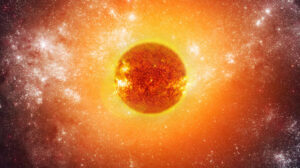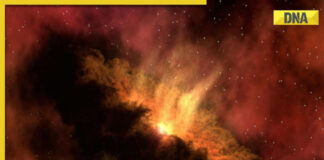JULY 19, 2022

Open book with planets floating out of it. – Mimma Key/Shutterstock
Taking measurements in space is no easy task. After all, you can’t just make a cosmically long ruler in order to figure out distances when you’re talking about objects that are millions and billions of miles apart. The difficulty in measuring space has led many to wonder where the solar system ends. Well, it turns out the answer depends on what you define as the end.
According to NASA, there are several criteria you can use to define the end of the solar system. If you base it on where the planets end, you could say that it ends at Neptune or the Kuiper Belt, the band of asteroids where the dwarf planet Pluto is located (via Space Center Houston). If you believe the solar system consists of everything influenced by the gravity of the sun, you would say it ends at the Oort cloud, which, according to Britannica, is a spherical cloud of debris surrounding everything else in our solar system, a thousand times farther from the sun than Neptune. Finally, you could say the solar system ends where the sun’s magnetic field ends, also known as the heliopause (via the European Space Agency).
The More We Learn, The Larger Our Solar System Seems

Man looking at the stars. – Denis Belitsky/Shutterstock
So why don’t scientists all agree to use a single measurement to define the end of the solar system? While it might seem simpler if we just picked a distance and stuck with it, the reality is a bit more complicated. As our understanding of the universe increases and our technology becomes more advanced, we learn more about the intricacies of our solar system.
For example, scientists used to assume that the Kuiper Belt was the end of our solar system until astronomer Jan Oort proposed the existence of the Oort cloud (via Britannica). The existence of the Oort cloud could explain where some comets come from, especially ones that don’t lie on the same plane as the rest of the solar system. This is because the Oort cloud is spherical, surrounding the solar system from all sides, while most other objects in the solar system all exist on roughly the same plane, according to NASA. This discovery expanded the known solar system, and more discoveries could change our definition even further.
Most Scientists Consider The Heliopause To Be The End Of The Solar System

The sun in space. – Andrey Armyagov/Shutterstock
Generally speaking, most scientists define the end of the solar system as the end of the heliosphere, which is created by solar wind and the sun’s magnetic field forming a bubble around the solar system (via the European Space Agency). The edge of the heliosphere is known as the heliopause. According to NASA, the flow of particles in the heliosphere travels out to a distance about three times the distance to Pluto.
There have only been two manmade objects to cross the heliopause, NASA’s Voyager 1 and 2. Both probes were launched in 1977 with the goal of studying our solar system and beyond (via NASA’s Jet Propulsion Laboratory). Voyager 1 crossed the heliopause on August 25, 2012, while Voyager 2 crossed it on November 5, 2018. Though the heliosphere has been considered a more consistent point of measurement for the end of the solar system by scientists, data from the two probes shows that they left the heliosphere at different distances from the sun. According to a paper published in Nature, this could indicate that the heliosphere is constantly changing in size. The truth is that trying to determine the end of the solar system is a difficult task, and the more we learn, the more complicated it becomes.










































































































